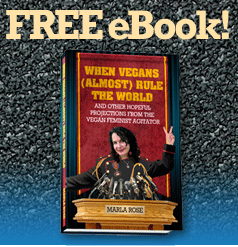
If you would prefer a printed softbound version of When Vegans (Almost) Rule the World, you can pick one up for just $11.99 at Amazon. Kindle eBook coming soon!
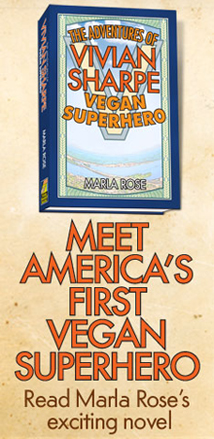
Available in either softbound or Kindle/Nook/etc. eBook at Amazon
viviansharpe.com

 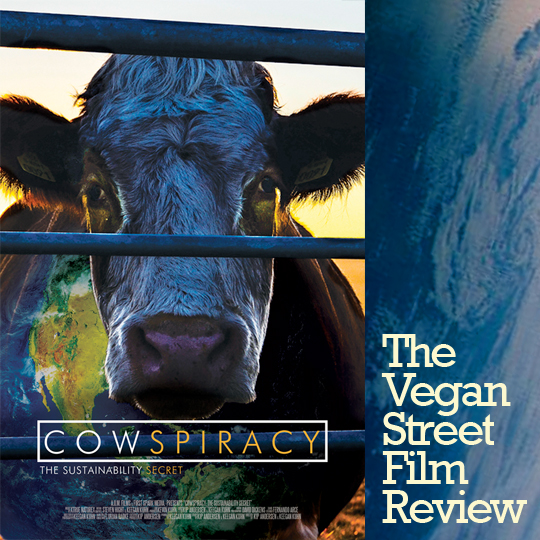 Film Review: The Ghosts In Our Machine directed by Liz Marshall 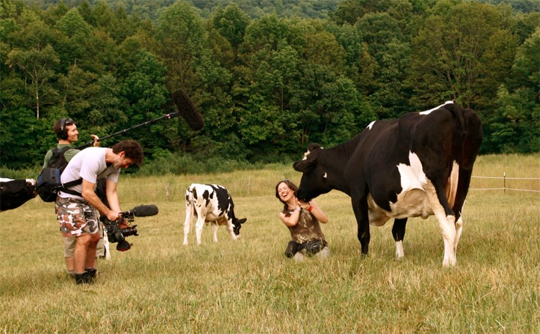 I am not sure where to start here. I was so touched by The Ghosts in Our Machine that even though I’ve seen it three times now, I am still seeing layers of complexity that I hadn’t noticed before. The human focus of the film, Jo-Anne McArthur, is a soft-spoken documentary photographer with a surprising and uncommon tenacity. As someone who lives both in and outside of the most brutal, human-created trenches - her work shines a spotlight on the victims of our war on animals - she seems too gentle at first for such a career. With pale eyes and delicate features, Jo-Anne has a face that seems adept at both revealing and concealing emotions large and small, holding the audience engaged as we wait for the next one to skitter or flash across the fluidly expressive canvas of her face. Jo-Anne travels the world documenting animals ensnared by our violent, exploitative industries, and as part of the film, we see her collecting the photographs for the collection that has just been published by Lantern Books, We Animals. As she makes her way through the world, she is captured by a different kind of film lens herself. We see her hugging a cow, taking a breath as she kisses him (as we do the ones we love), inhaling his essence; she apologizes to the petrified animals on a fur farm she and another activist have trespassed upon. We see her interacting with people, too, meeting with her agency to encourage them to get her photographs into more outlets, taking a subtle gulp when they tell her what she’s probably heard so many times, essentially that her photographs are beautiful, important and moving but, honestly, publications aren’t ready to take a chance on them. She remains steadfast, though, with her conviction that these images - these sensitive beings, these stories, our story - has to come out of the darkness and be heard for us to face the truth and evolve. 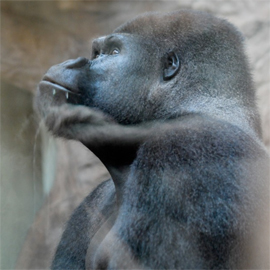 Jo-Anne’s face is one of many compelling faces we see in The Ghosts in Our Machine:
From the big, wet eyes of a young rescued steer named Sonny to the
terrified, untrusting foxes backing away from her camera in wire cages;
the soulful, nervous expression we see on the purpose-bred beagle who
has been adopted out of a laboratory to the sad, distant eyes of a
gorilla in captivity, each of these faces tell a story, one that is not
very flattering of humanity, if we are brave enough to hear it. Jo-Anne’s face is one of many compelling faces we see in The Ghosts in Our Machine:
From the big, wet eyes of a young rescued steer named Sonny to the
terrified, untrusting foxes backing away from her camera in wire cages;
the soulful, nervous expression we see on the purpose-bred beagle who
has been adopted out of a laboratory to the sad, distant eyes of a
gorilla in captivity, each of these faces tell a story, one that is not
very flattering of humanity, if we are brave enough to hear it. From the opening moments of the film, showing animals in various forms of captivity with disconnected voices talking about our relationship with and to other animals, we can see that The Ghosts in Our Machine is not a lightweight, escapist popcorn movie. Nor is it one that will ram an agenda over your head. It is a film that reflects the deep passion and heart of Jo-Anne and the director, the very talented Liz Marshall, and as such it is both tender and strong. With beautifully framed shots that perfectly complement Jo-Anne’s searing photographs, graceful transitions, subtle sound and music, the audience is gently transported into seeing the world through the eyes and the mind of one who does not differentiate between species, who cannot easily detach. The film adroitly captures the deep dissonance of living in a culture where the use and cruelty against animals is both pervasive and hidden, commonplace and rarely discussed, and how disintegrating the animal advocates experience can feel to those of us who have to explain why we don’t “just eat a little chicken” to the rest of the world. Like Jo-Anne, we are both inside the cage of our society and outside of it. It can be a jarring, lacerating and challenging experience to live one’s life outside of the status quo, guided by empathy, but, it is ultimately an empowering one. We see Jo-Anne return again and again to nourish her spirit by spending time at Farm Sanctuary, smiling and exuding joy among the animals who have found sanctuary, and we can relate this to our experience of finding relief and comfort in an often painful world. 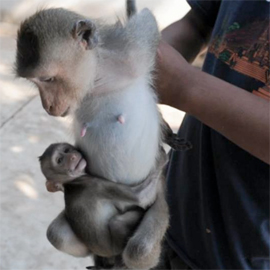 Many
of the images stick with me (the one of Jo-Anne sitting at the table of
her apartment kitchen looks like a Vermeer painting), but,
unexpectedly, the sounds were the most haunting to me: of the strange,
unworldly bark of the white animal (a dog? a fox?) in the cage; the
terrified whimpers and screams of so many animals in captivity; the
captive dolphin, opening his mouth mechanically for a fish, with a
sound like a creaking door; the clicking camera; the hushed, gentle
reassurances; most deliciously, the transition of a pig snorting
contentedly in sanctuary hay to a pen on paper as Jo-Anne quickly jots
down notes in her journal. Like the images, these sounds wash over the
audience and penetrate. Director Liz Marshall captured film with the
same care and sensitivity as her human subject does when she
photographs animals. It is an exquisite portrait. Many
of the images stick with me (the one of Jo-Anne sitting at the table of
her apartment kitchen looks like a Vermeer painting), but,
unexpectedly, the sounds were the most haunting to me: of the strange,
unworldly bark of the white animal (a dog? a fox?) in the cage; the
terrified whimpers and screams of so many animals in captivity; the
captive dolphin, opening his mouth mechanically for a fish, with a
sound like a creaking door; the clicking camera; the hushed, gentle
reassurances; most deliciously, the transition of a pig snorting
contentedly in sanctuary hay to a pen on paper as Jo-Anne quickly jots
down notes in her journal. Like the images, these sounds wash over the
audience and penetrate. Director Liz Marshall captured film with the
same care and sensitivity as her human subject does when she
photographs animals. It is an exquisite portrait. I want to touch briefly on the subject of graphicness. It is completely understandable that people are nervous about seeing footage of suffering and violence. While I would argue that this film is not graphic, there are moments that are difficult to watch, particularly a short section on cows in a slaughterhouse and the animals in the cages at the fur farm. It would be impossible, though, to do justice to this subject and sidestep the very real suffering and violence that is inflicted upon the animals. The film’s title refers to how the animals become invisible ghosts in our machinery. If we conceal the reality of what we do to them, the animals become “ghosts” again, hidden in the shadows because of our sensitivities and this is dishonest. While violence is captured on film, it is not gratuitous and it is shown with great care. While Jo-Anne is doing her work to expose people to the reality that so many animals face, she also lives in this present world: a world that seems to think nothing of stuffed animals in cases at the airport; of butcher shop windows with white, glistening bone and pink, marbled flesh; of fur coats and the inexhaustible advertising machine around her. She keeps doing her work, though, and we keep doing our work. She finds moments of comfort and joy in her friendships and the indescribable satisfaction of doing what she loves to do for the ones she cares about so dearly; we should all be so fortunate. Please see this important film. Whether you’re vegan or not, it will inspire you.  Check out our interview with The Ghosts In Our Machine director Liz Marshall and our review of Jo-Anne McArthur's book We Animals. © 2013, 2014, Vegan Street |













 |
 |
 |
 |
 |
 |
 |